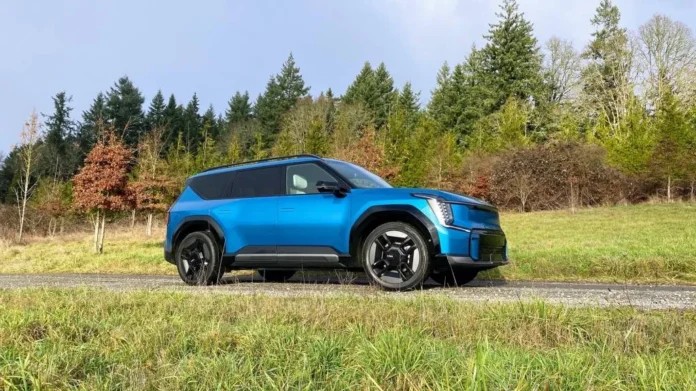Large-scale energy storage today is dominated by lithium-ion batteries, which use an electrochemical reaction to pack away and discharge power. Exowatt, instead, stores solar energy in a thermal battery (a fancy term for a hot brick) that can hold its energy for up to 24 hours.
Humans have been storing heat energy in hot materials for millennia; manufacturers have used hot bricks to save energy in the blast furnaces used for steel production for centuries.
Exowatt also employs a Fresnel lens, another technological antique, to focus and concentrate the energy of the sun onto its hot bricks. The Fresnel lens, with its distinctive concentric circles, was invented in the early 1800s for use in lighthouse beams and has been called “the invention that saved a million ships.”
At night or on cloudy days, Exowatt’s machine can heat the bricks to a temperature of 1,000 degrees Celsius with electric resistive coils like those used in a toaster — powered by green energy sources such as wind, solar, or a clean grid. Resistive heating is about 200 years old.
Extracting the thermal energy from the hot bricks is accomplished with a Stirling engine, another piece of vintage-1800s energy gear.
Invented by Scottish clergyman and engineer Robert Stirling, the Stirling engine converts heat to power by harnessing a temperature difference in a gas to drive pistons. The steam engine, invented about a century earlier, outperformed the Stirling engine in most uses, relegating the technology to niche applications like Swedish submarines and toys.
Startups such as Antora Energy, Brenmiller Energy, Calectra, and Rondo are developing their own variations of thermal brick energy storage. A number of defunct solar companies have also attempted to modernize the Stirling engine and the Fresnel lens for utility-scale solar applications.
But Exowatt’s CEO told Canary Media in an interview that his company has optimized these vintage technologies for cost and performance, allowing it to store energy at a fraction of the price and for much longer than is possible with lithium-ion batteries, which rely on imported minerals and metals.
Exowatt aims to “eventually” offer firm, clean electricity for 1 cent per kilowatt-hour without subsidies, according to CEO and co-founder Hannan Parvizian, which is a fraction of today’s power prices — renewable or not — and a cost that would enable emissions-free data centers and a lot more if realized.
The startup plans to sell its module directly to data center and crypto clients, claiming that it has “a backlog of demand of over 1.2 gigawatts for data centers across the U.S.” It expects to begin deployments of its 40-foot container systems later this year. The 25-kilowatt electrical machines can be reserved for a $7,500 deposit.
If the AI juggernauts can’t get their power from solar, wind, geothermal, or nuclear, they’ll get it from planet-warming fossil fuels. Google’s emissions have risen by 48 percent since 2019 due to the power demands of AI. Across the Southeast U.S., utilities are proposing to build massive amounts of new fossil-gas power plants, in large part to meet demand from new data centers.
That reality highlights the urgency of the task at hand for Exowatt — and the many other firms trying to crack the code on providing affordable clean power around the clock.

Source link by Canary Media
Author Eric Wesoff
#Exowatt #aims #repurpose #tech #deal #power #demand






